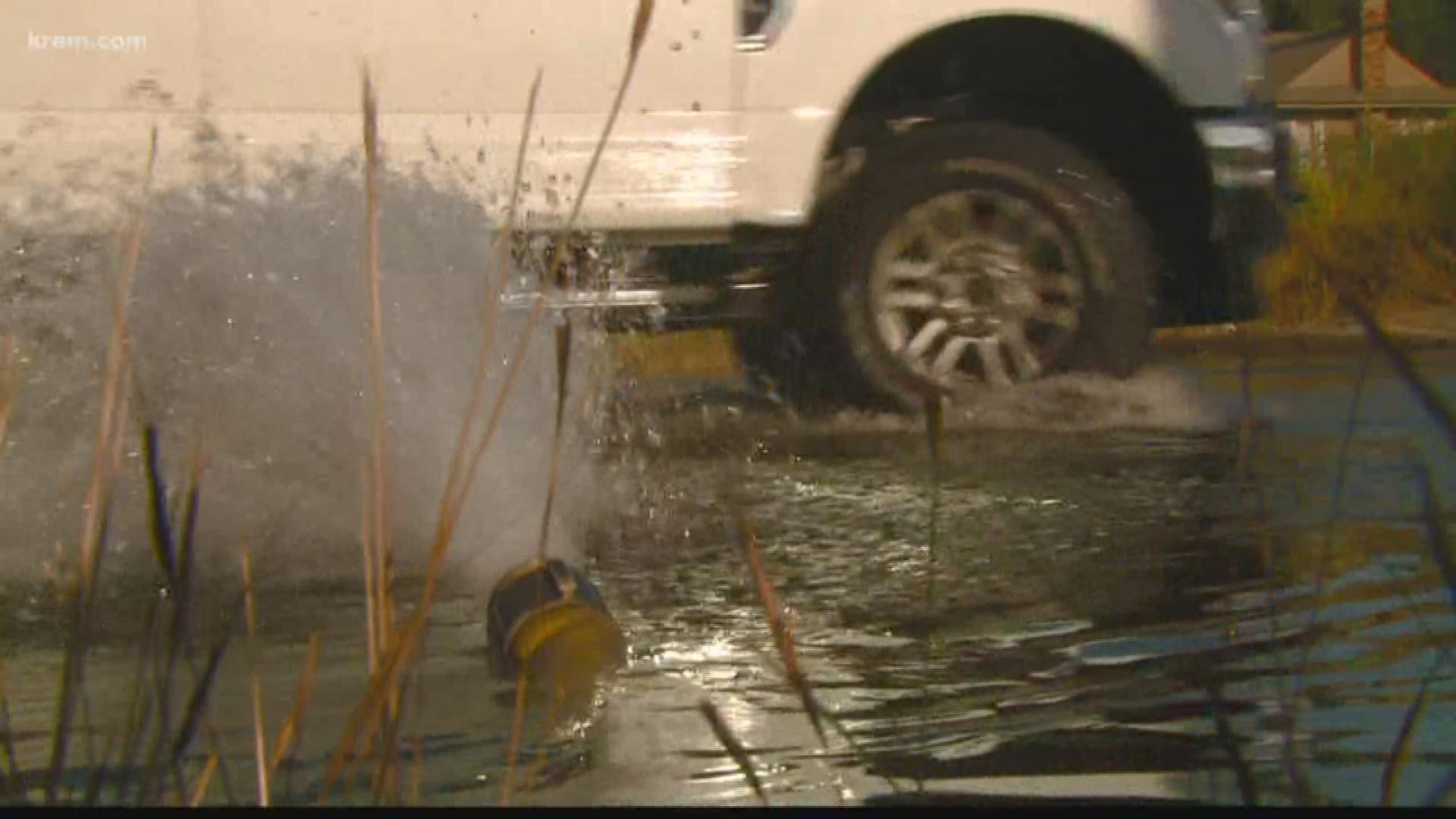SPOKANE, Wash. — Residents in an area of the Hillyard neighborhood were told not to cook or drink water from their faucets and taps last Friday, July 26.
The City of Spokane is still telling residents in the affected area not to drink or cook with the water and have been providing bottle water to those in the area. Before the alert was issued, a few residents reported to the city that there was a green tint and fibers floating in their tap water.
The contamination, which city officials happened when a hydroseed vehicle using a fire hydrant allowed contaminated back flow to enter the city's water system, is affecting those in an area bound by Wellesley Avenue, Freya Street, Crown Avenue and Havana Street.
The City of Spokane said it hopes to have the water cleaned by Friday at the latest.
This has led many people to ask questions about the contamination, such as what the water can be used for and the eventual costs that will be associated with cleanup.
KREM reached out to City of Spokane spokeswoman Marlene Feist with questions about the contamination.
RELATED: Activist Erin Brockovich sounds off on Hillyard water contamination: 'There is more to this story'
1. Is the water safe for other uses, or should I avoid it completely?
According to Feist, the water cannot be used to cook or drink, but is safe to use for irrigation, bathing and cleaning.
If there is any risk of ingestion, the city said you should be cautious and avoid using the water.
Bottled water has been passed out door-to-door and at a post office in the area.
2. Will customers be charged for any flushing or other water usage involved in cleanup?
According to Feist, customers will not be footing the bill for cleanup at all, as all flushing of lines will be done on lines that aren't associated with customers.
"The flushing happens before any customer's meters [it happens before the place where customer's meters record water usage], so there's no water use associated with their customer account," she said.
Customers will only incur fees if they use or run their water during the contamination, Feist said. She added that it hasn't yet been decided if the city or the company who owned the truck in question will be charged for cleanup and repairs.
Feist also said the city doesn't yet have an estimate on how much the repairs and cleanup will cost.
3. Are commercial companies usually allowed to connect to hydrants?
Commercial companies are allowed to connect with hydrants to gather water for their vehicles and equipment, but only with a permit through the city, according to Feist.
"Certain commercial customers have permits to use hydrants to fill up certain commercial vehicles," she said.
The permit needed to connect to hydrants for commercial purposes requires that the trucks have a one-way valve in place to prevent back flow from contaminating water, she said.
"The companies that have permits to use our hydrants are required to use approved back flow prevention devices to avoid any problems like this," Feist said. "In this case, the truck either didn’t have one or it wasn’t used appropriately or it was broken."
4. Has this happened before?
Feist said it is not yet known what company owned the truck that led to the contamination. She also said she couldn't recall any other time that this type of contamination has happened in Spokane.
5. How was the contaminated water contained to just the Hillyard area?
The contaminated water was contained to the area under the warning because of city officials turning off a valve, which prevented the water from spreading throughout the system into other places, Feist said.
"It was isolated because we turned off the valve upon hearing about the problem," she said. "The water department isolated the area by how they managed the system."
Feist estimated that 100-120 customers are in the affected area, and the "the bulk of them are commercial."
5. How long will the cleanup and repairs take?
Feist said crews have been testing the water since Friday, and that different tests can take anywhere between hours and days to complete.
The city was first made aware of the contamination on Friday morning when residents reported fibers coming out of the water, which had a green tint.
She said the city wants to make sure that the water is safe again before telling people they can drink and cook with it.
6. Other than clearing out the contaminated water and cleaning the lines, what else needs to be done?
The cleaning of the water itself isn't the only thing the city has to take care of before residents can go back to using their faucets for drinking or cooking water, as water usage meters have been damaged due to clogs, Feist said.
"The other thing we're going to have to go out there and do is replace some of the meters, perhaps all of them, especially the smaller, residential meters," Feist said. "We're finding that they're clogged with fibers from the hydro seed, so to get them to work properly and to avoid having any of those things shake loose and go into somebody's house, we're going to have to go through and replace meters."
She said that crews started checking and replacing meters Sunday and will continue on Monday. Customers will not be forced to pay for the cost of the meter replacement.

